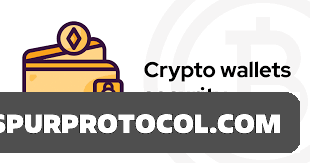Best Practices For Wallet Security
A crypto wallet is your gateway to Web3, storing your digital assets and managing transactions. Learn how to secure your wallets and to minimize risk.
Go Back

🕒 3:05 PM
📅 May 22, 2025
✍️ By ethangeorge
Best Practices for Wallet SecurityTo ensure wallet security, consider these best practices:
1. Strong passwords: Use complex passwords that include a mix of letters, numbers, and symbols.
2. Two-Factor Authentication (2FA): Add an extra layer of security by enabling 2FA where possible.
3. Software Updates: Keep your wallet software updated to ensure you have the latest security patches and bug fixes.
4. Regular Backups: Regularly backup your wallet and create multiple backups of your encrypted wallet and store them in secure, offline locations.
5. Avoid Public WiFi: Never access your wallet over public WiFi networks.
6. Private Key Security: Keep your private keys offline whenever possible and do not share your private key information with anyone else.
7. Carefully Examine Links: Be aware of phishing attempts and suspicious websites or emails that may try to trick you into revealing your wallet credentials. Verify the authenticity of websites and double-check URLs before entering sensitive information.
8. Verify Wallet Addresses: Always double-check the recipient’s wallet address before initiating a transaction. Sending funds to the wrong address could result in permanent loss.
Wallet Permissions and Access Control
When connecting your wallet to dApps or websites, be cautious about permissions:
1. Grant Minimal Permissions: Only give permissions that are necessary for the specific action.
2. Revoke Permissions: Regularly check and revoke unnecessary permissions.
3. Monitor Wallet Activity: Keep an eye on your wallet activity for unusual transactions and unauthorized access

